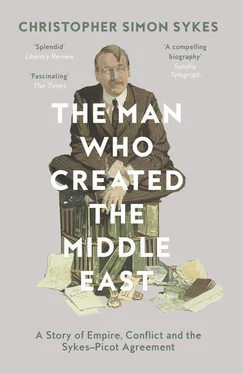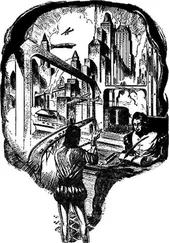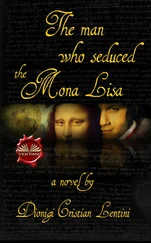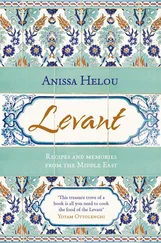Needless to say his writings also often embody the attitudes regarding race that were common among members of his class in a world which was largely ruled by Great Britain. Though they are anathema to us today it was considered quite normal in the nineteenth century to refer to Jews as ‘Semites’, the peoples of the East as ‘Orientals’, and the South African blacks as ‘Kaffirs’. With this in mind I decided not to sanitise these terms when I came across them. I was also mindful of the fact that while Mark expressed many racist views about the Jews when he was a young man, he radically changed his mind after meeting the celebrated journalist Nahum Sokolow and embraced Zionism.
When I was growing up my father rarely talked about my grandfather, and when he did so he always referred to him as ‘Sir Mark’. I think growing up in his shadow had been too much for him. Certainly his former governess, Fanny Ludovici, known in the family as ‘Mouselle’, who worked as his secretary, endlessly regaled us with stories of what a wonderful man our grandfather had been and what a loss it was to the world that he had died so young. My aunts and uncles also expressed this view, though when I actually interviewed my Aunt Freya, Mark’s firstborn, about her father for a book I was writing, The Big House , she had very little to say about him, and I suddenly realised that the reason for this was that she scarcely knew him as he was hardly ever at home. My interest was aroused, however, and when the Arab Spring sparked off a series of revolutions that spiralled into the situation we see today, with the Middle East seemingly on the point of disintegration, and the words Sykes–Picot regularly on the front pages, the time seemed right to tell the story of the 35-year-old junior official who was one of the men behind it.
In the early hours of 17 September 2008, a bizarre scene took place in the graveyard of St Mary’s Church, Sledmere, high up on the Yorkshire Wolds. In a corner of the cemetery hidden by yew trees were two tents illuminated by floodlights, from which there would occasionally emerge figures dressed in full biochemical warfare suits, their shapes creating eerie shadows on the outer walls of the church. But this was no science-fiction movie. It was an exhumation, of a man who had died nearly 100 years previously, and it was hoped that his remains might provide evidence that in the future could save the lives of billions.
The grave that was being opened up on that early autumn morning was that of Sir Mark Sykes, 6th Baronet of Sledmere, and MP for East Hull. He had passed away on 16 February 1919, aged thirty-nine, a victim of the Spanish flu, a particularly deadly strain of influenza that had swept across the world towards the end of the First World War, killing 10 per cent of all those it infected. At the time of his demise, Sykes was staying in Paris, where he had been attending the Peace Conference. Had he been a poor man he would have been buried at once nearby, the custom having been to bury victims of the flu as quickly as possible to avoid the further danger of spreading the virus by moving them. However, if a family could afford to pay for the body to be sealed in a lead coffin, a very expensive process, then it could be shipped home for burial, which is how Sykes came to lie in rest in a quiet corner of East Yorkshire rather than in a far-off Paris cemetery.
Though there have been many other strains of influenza in the intervening years, none have been as toxic as the Spanish flu, so called because Spain was the first country to report news of large numbers of fatalities. A Type-A virus classified as H1N1, and thought to have originated in poultry, it broke out in 1918, probably in America, and spread like wildfire partly owing to the movement of troops at the end of the war. Its symptoms were exceptionally severe, and it had an extremely high infection rate, which was the cause of the huge death toll. What made it exceptional, however, was that unlike most strains of influenza, which are normally deadly to the very young and the very old, more than half the people killed by H1N1 were young adults aged between twenty and forty. By the time any of the therapeutic measures employed gave a hint of being successful, the virus was on the wane and between 50 million and 100 million people had already died. It was a death toll that has haunted virologists ever since.
To this day, the great, unanswered question about H1N1 is how this dangerous strain of ‘avian flu’ made the leap to humans, one that has become even more urgent since the emergence in the 1990s of a yet more highly pathogenic virus, H5N1, first documented in Hong Kong in 1997. Using isolated viral fragments from H1N1 flu victims, of which there were only five examples known worldwide, mostly from bodies preserved in permafrost, scientists were able to reconstruct a key protein from the 1918 virus. Called haemagglutinin , it adopts a shape that allows it readily to latch on to human cells, and its discovery went a long way to helping virologists understand how such viruses adapt to new species. It struck one of them, Professor John Oxford, of Queen Mary University of London, that if modern methods of extracting DNA could derive so much information from frozen samples, then a great deal more could be extracted from soft tissue, such as might be found in a well-preserved body that had been sealed in a lead-lined coffin. He knew exactly the condition in which such a body might be found from photographs he had been shown of the freshly exhumed body of a woman who had been interred in a lead casket in the eighteenth century in a cemetery in Smithfield. ‘This lady was lying back in the lead coffin,’ he said, ‘with blue eyes. She was wrapped in silks, and had been in that coffin for two hundred years. She was perfectly preserved.’
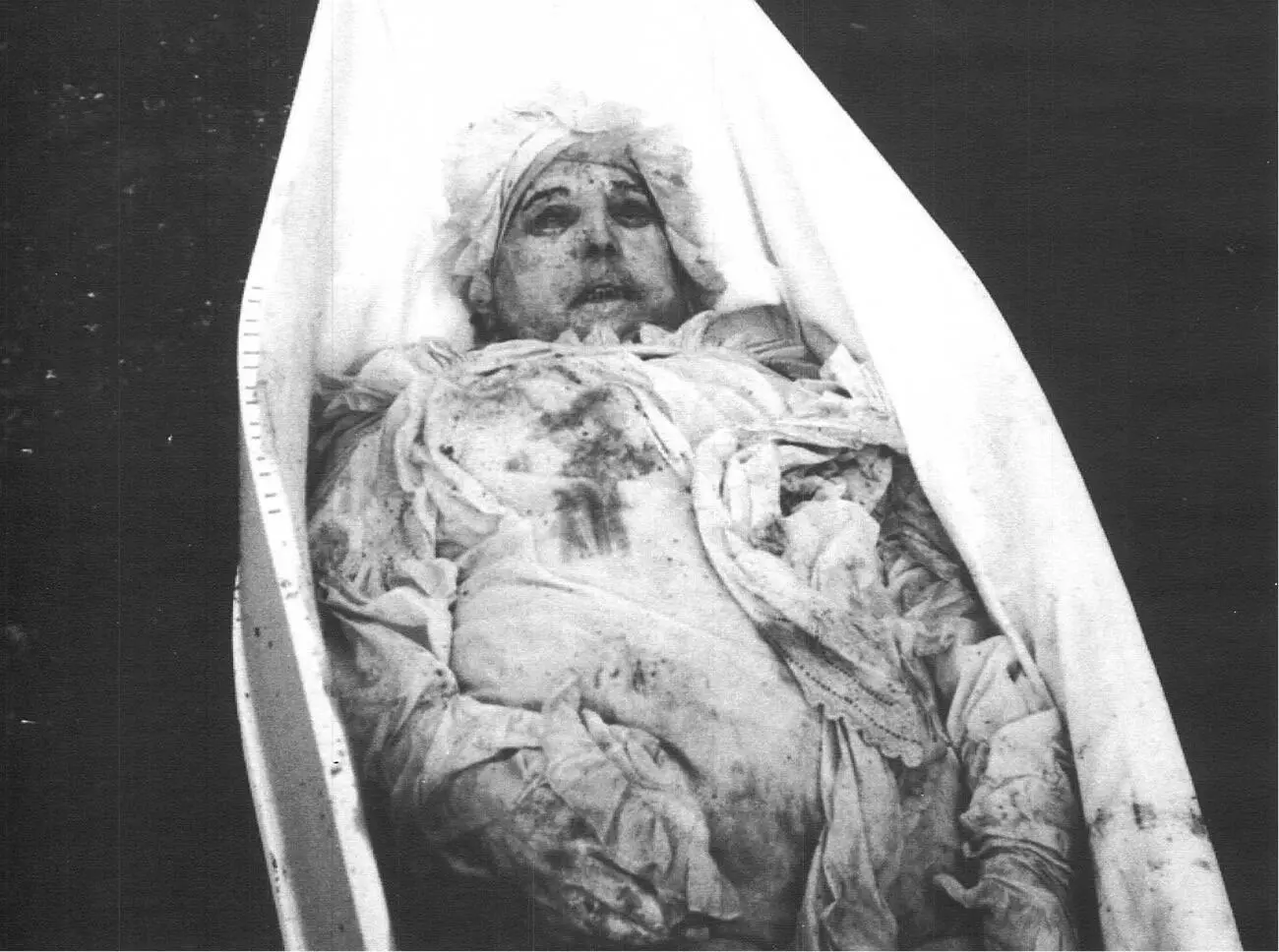
Oxford knew that ‘We could take for example a big piece of lung, work on it, do the pathology and find out exactly how that person died, so in the next pandemic we would know to be especially careful about certain things.’ 1Ian Cundall, a contact in the BBC, told him the story of Sir Mark Sykes, and he decided to contact the living relatives, who all gave their permission for the project to go ahead. This included moving the coffin of Sykes’s wife, who had died eleven years after him and had been buried in the same grave. After the Home Office and the Health and Safety Executive had been satisfied that the operation would involve absolutely no risk to the public, all that was left was for the local Bishop and Rural Dean to give their assent.
The exhumation team dug until they reached the remains of the coffin of Sykes’s wife, Edith, which, being made of wood, had disintegrated, leaving only the bones. These were carefully moved aside before the dig was continued, the utmost care being taken until one end of Sir Mark’s lead coffin was exposed. At first this looked to be in good condition, until it was noticed that there was a four-inch split in the lid. ‘That didn’t bode well,’ reflected Oxford. They pulled back the coffin’s lead covering, to find that, as Oxford had suspected when he saw the split, the body was not in the perfect condition they had so prayed for. The clothes had disintegrated and the remains were entirely skeletal. The team managed to recover some hair, however, which was important as that would possibly include the root and some skin, and, as usually happens, the lungs had collapsed onto the spinal cord, allowing the anatomist to remove some dark, hard tissue. Finally they extracted what might have been brain tissue from within the skull. With the exhumation at an end, prayers were recited, and then the team stood round the re-closed grave and sang ‘Roses of Picardy’, the song that soldiers used to sing on the way to the front. When the news of the exhumation finally reached the ears of the Press, there followed a rash of headlines such as ‘Dead Toff May Hold Bird Flu Clue’.
Читать дальше
